Planning a fishing trip to Kenai river but have no idea what to pack or what you’re going to need? Take a look at our helpful guide and start packing!

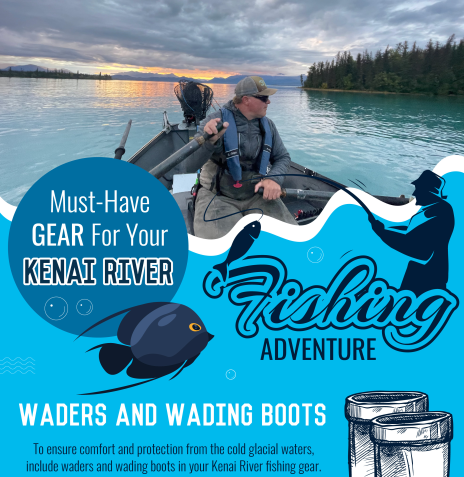
Planning a fishing trip to Kenai river but have no idea what to pack or what you’re going to need? Take a look at our helpful guide and start packing!

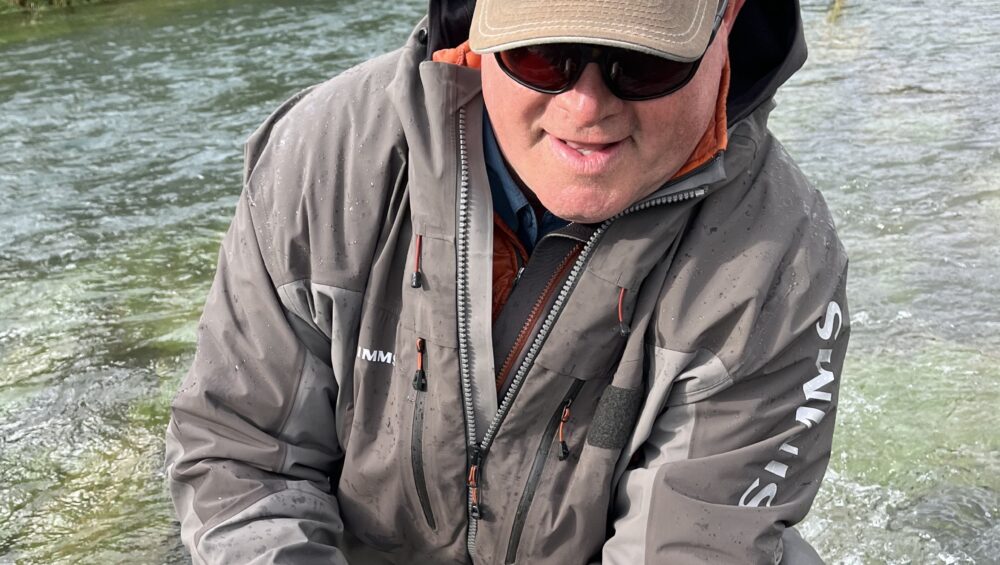
Boondoggling, a fun name for drift fishing out of a boat. When I started fishing in the Kenai River in Alaska in the late 90’s all we did was “boondoggle” the Middle Kenai River section in the fall for huge rainbow trout and Dolly Varden char. Contrary to the true meaning of boondoggling (wasting money or time on questionable activities), this technique on the Kenai River is an effective and efficient way to catch lots of rainbow trout and Dolly Varden char.
In earlier years, my buddies Clint and Cole would wake in the very early morning and roust me out of bed. We would drive from Anchorage to Bings Landing on the river to run big drifts all day long for the trophy trout and char that lurked in the legendary waters of the Kenai River. We had friendly competitions for the most fish and biggest fish. The loser or losers had to drive home after a long day of fishing and the winner got to nap the entire way home.
With the boondoggle, you simply cast a weight and a leader attached to whatever fly you want to use. You cast this setup directly upstream, to a seam line or into the current you want to run a drift through and when your weight hits the bottom, your drift begins. Your fishing guide will slow the boat down just enough to drift the same speed as the current so you have a natural presentation on the drift. The technical side of this technique is finding the right weight and leader length from the weight to the fly. Fortunately, when your fishing with me or one of the highly trained professionals at Jason’s Guide Service, we spend so much time on the water there’s no guessing. We’ll know the perfect specifications for the ultimate boondoggle rig on any given day.
Side-Drifting the Kenai River for rainbow trout and Dolly Varden char is another outstanding technique. It has the angler standing on shore or wade fishing instead of drifting in the boat. Side-Drifting requires a well-placed cast into the current and then you let the rig bounce along the bottom until you get a bite or the drift stops; then you start all over. A Side-Drift rig is set up the same way as a boondoggle rig. With the Side-Drift you are casting to different levels in the river’s water columns as opposed to casting upstream and drifting with the boat, but the principle is the same; you need to have the right amount of weight and leader length to entice the trout and char into biting your fly.
Jason’s Guide Service incorporates both boondoggling and Side-Drifting into our program on both the Upper and Middle Kenai River segments all summer and throughout the fall. Drift fishing is a great way to cover lots of water and present many different types of flies to the rainbows and dollies. Drift fishing reminds me of my youth when we fished Lindy and Roach rigs for walleyes on lakes and river systems in the upper midwest. We bounced night crawlers and leeches along the bottom of these fisheries. The only difference between now and then being, now we are catching Dolly Varden char and rainbow trout using artificial flies, versus the live bait we used in the past.
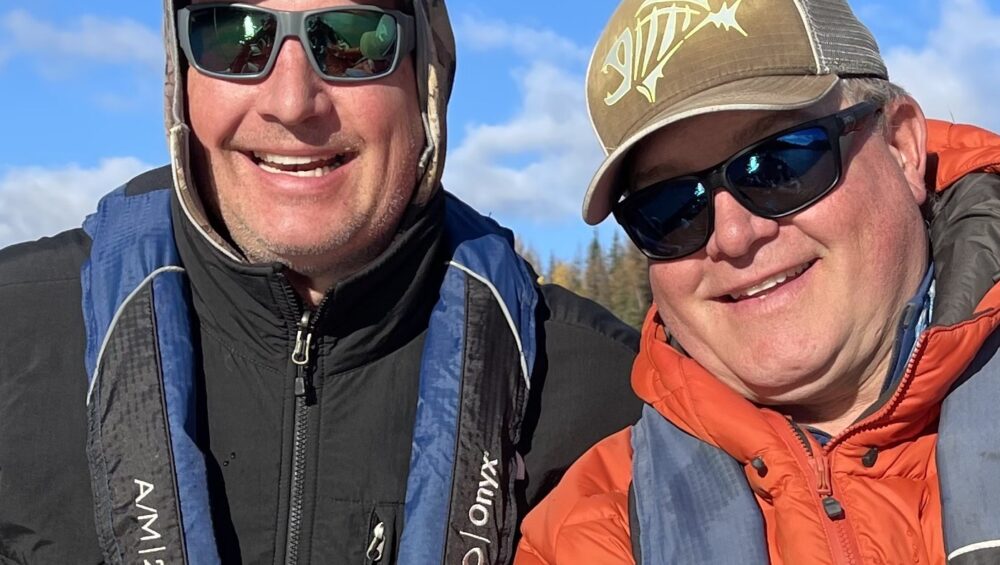
| Back trolling – or “plugging” as we call it – on the Kenai River is a great way to catch salmon of every species, rainbow trout, and Dolly Varden char. Plugging is also the best way to fish with younger kids because of the ease in which we present the lure and the fact that we can put the rods in rod holders and let the kiddos reel in every fish that bites. When the salmon, trout, or char hit a plug it’s usually an explosive wallop that bends the rod from rod tip to rod butt. Plugging is done best when all anglers are sitting down in the comfortable swivel seats in the drift boat and rods are in a rod holder, or being held by the anglers. This makes for an enjoyable easy going float down the river where we cherry pick the sweet spots we want to fish. Having the rods in the rod holders allows you the freedom to have your camera or iPhone ready for any wildlife or scenery photos that you want to take. Holding the rods allows you to feel the plug running through the holes and feel the smackdown when your lure gets hit. On some trips people switch from holding the rod to using a rod holder depending on what is happening in the boat. A plug is nothing more than a lipped crankbait that dives to certain depths depending on speed of water currents and how fast we let the boat drop downstream with the current. On the Kenai River we use several different styles and sizes of plugs for the different species we target as well as the different holes we fish. Most people want to see everyone in the boat catching lots of fish and the fact that you can take turns on who gets to reel the fish in or trade seats to sit in front of the hot rod makes it an equal opportunity fishing experience everyone loves. It’s not uncommon for the guides at Jason’s Guide Service to have a few different options for the style of fishing in the boat. Some days we will plug fish and drift fish the same day or plug fish and fly fish the same day. Everyday is different on the Kenai and versatility and variety usually makes for a more successful day on the river. Plug fishing on the Kenai River is one of, if not the most effective way, to catch fish of any species anytime of the year, and is a fun way to fish the Kenai River all day or part of the day. |
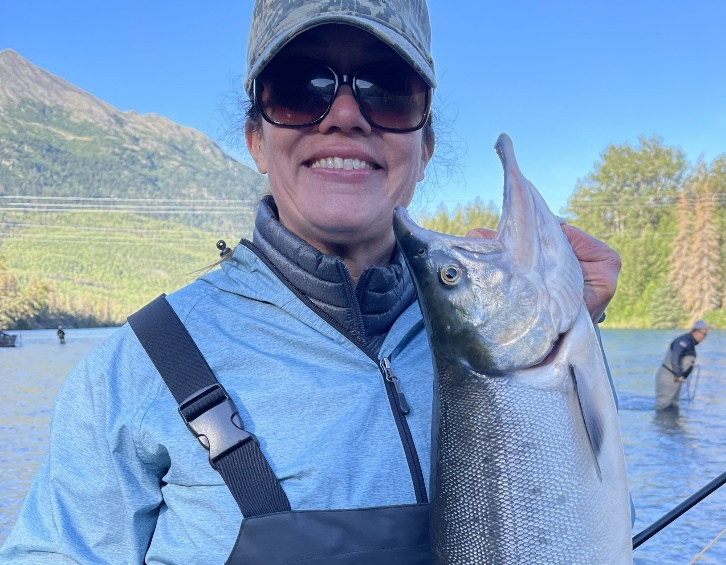
Picture this. You’re standing waist-deep in the crystal-clear waters of Alaska’s majestic Kenai River, surrounded by breathtaking snow-capped mountains and lush forests. You feel the adrenaline surge through your veins as you cast your line, anticipating the thrill of reeling in a trophy-sized salmon or rainbow trout.
Sounds exciting, doesn’t it? The Kenai River is an angler’s paradise; it offers a world-class fishing experience like no other. If you want to make your once-in-a-lifetime fishing adventure truly unforgettable, come prepared with the right Kenai River fishing gear.
In this blog, we’ll offer a closer look at must-have gear for your Kenai River fishing adventure. These essentials will help you tackle the river like a pro and reel in the catch of your dreams. Let’s begin!
If you want to maximize your chances of success, use high-quality fishing rods and reels. The right rod and reel combination will improve your casting accuracy and distance, enhance your ability to detect subtle bites and help you fight the strong, hard-fighting fish found in these waters.
The type of rod and reel you choose will depend on your target species and preferred fishing techniques. For salmon fishing on the Kenai River, opt for a medium to heavy power, fast action rod. A spinning or baitcasting reel with a smooth, reliable drag system is also essential; it’ll help you maintain control during intense battles with your catch.
For fly fishing enthusiasts targeting rainbow trout and Dolly Varden, a 7 to 9-weight fly rod with a fast action is ideal. Pair your fly rod with a high-quality fly reel featuring a strong, smooth drag system to manage the runs and jumps of these energetic fish.
When choosing your rods and reels, opt for a reputable brand that stands out for its durability and performance. G. Loomis, Waterworks-Lamson, and Shimano are excellent options. Investing in top-tier fishing equipment will improve your fishing experience and increase your chances of landing the trophy fish you’ve been dreaming of.
Recommended Read: Why the Kenai River is the Best Place to Learn How to Fly Fish
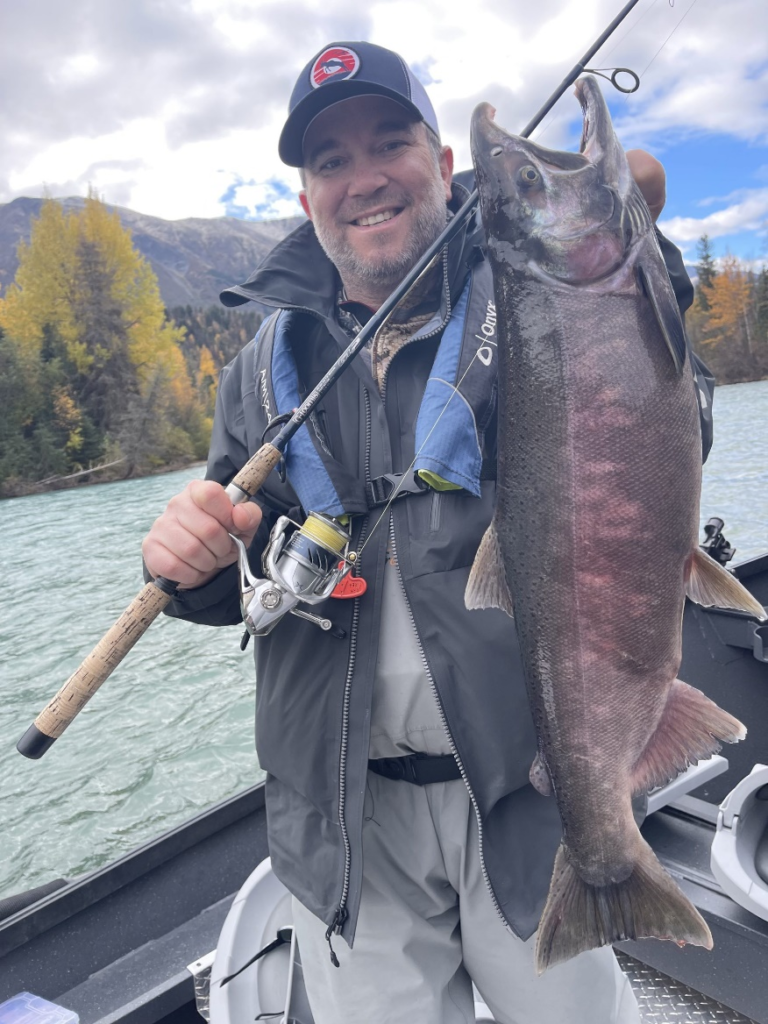
For salmon fishing, opt for a high-visibility monofilament or braided line with a 20-40 lb. test, depending on the species you’re targeting. For trout and Dolly Varden, a 6-12 lb. test fluorocarbon line is suitable. When it comes to leaders, use fluorocarbon or monofilament material, ranging from 10-30 lb. test for salmon and 4-10 lb. test for trout.
Selecting the right tackle isn’t just important; it’s imperative. This decision will significantly impact your ability to hook and land your target species.
Make sure you have a well-stocked tackle box with a variety of lures, baits, and terminal tackle. For salmon fishing, you should have the right lures and baits at your disposal.
Some popular options include:
The glacial waters can be rather cold, even during the summer months. Make sure you take special measures to stay dry and comfortable.
Waders and wading boots should be an indispensable part of your Kenai River fishing gear. Breathable waders made from materials like Gore-Tex are highly recommended for their ability to keep you dry by allowing moisture from sweat to escape. These waders are lightweight and comfortable, making them perfect for long days on the water.
When choosing waders, look for features like reinforced knees, adjustable suspenders, and built-in gravel guards to prevent debris from entering your boots. Additionally, opt for waders with a front pocket for easy access to small tools and tackle.
Wading boots will provide you with the necessary traction and stability on the river’s slippery, uneven bottom. Look for boots with durable soles (e.g., Vibram or felt) to ensure a secure grip on wet rocks and other slippery surfaces.
Some areas may restrict you from wearing felt-soled boots to prevent the spread of invasive species. To avoid any inconvenience, make sure you always check the local regulations before your trip.
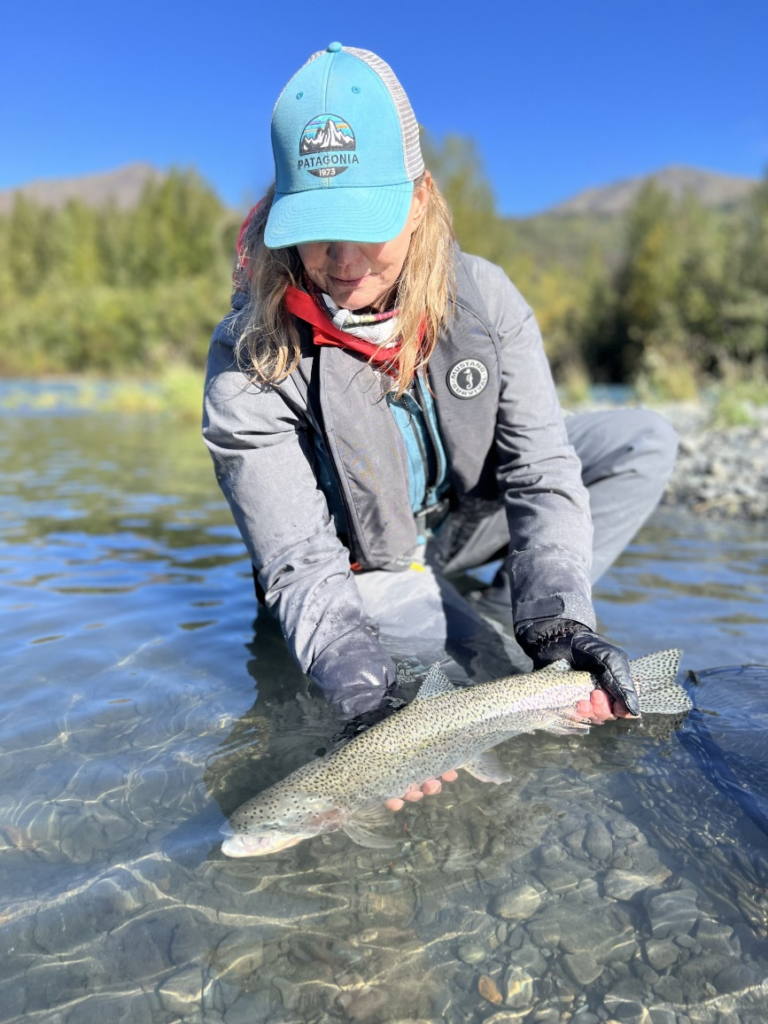
Alaska’s weather can be unpredictable; dress in layers and bring reliable rain gear. Begin with moisture-wicking base layers, put on insulating mid-layers, and choose a waterproof, breathable outer shell for the finishing touches. Don’t forget a hat, gloves, and warm socks to keep yourself comfortable during chilly Alaskan mornings.
Recommended Read: The Best Time to Fish the Kenai River
Polarized sunglasses are a must-have for any angler. They reduce glare on the water, allowing you to spot fish more easily and protect your eyes from harmful UV rays. Choose sunglasses with high-quality lenses that provide optimal clarity and contrast, making it easier to read the water and locate fish.
A well-organized fishing vest or sling pack will help you carry all your essential tackle, tools, and personal items while keeping your hands free. Look for a vest or pack with plenty of pockets, compartments, and adjustable straps for a comfortable fit. Some models also include built-in hydration systems, which can be a great addition for long days on the river.
If you want to enjoy an efficient and enjoyable Kenai River fishing adventure, get your hands on the right fishing tools and accessories. Here’s a list:
Safety should always be a priority when fishing on any body of water, and the Kenai River is no exception. A high-quality personal flotation device (PFD) is essential. Choose a PFD that’s easy to put on and take off. It should also offer a high level of comfort and ample buoyancy to keep you afloat in the event of an accidental swim.
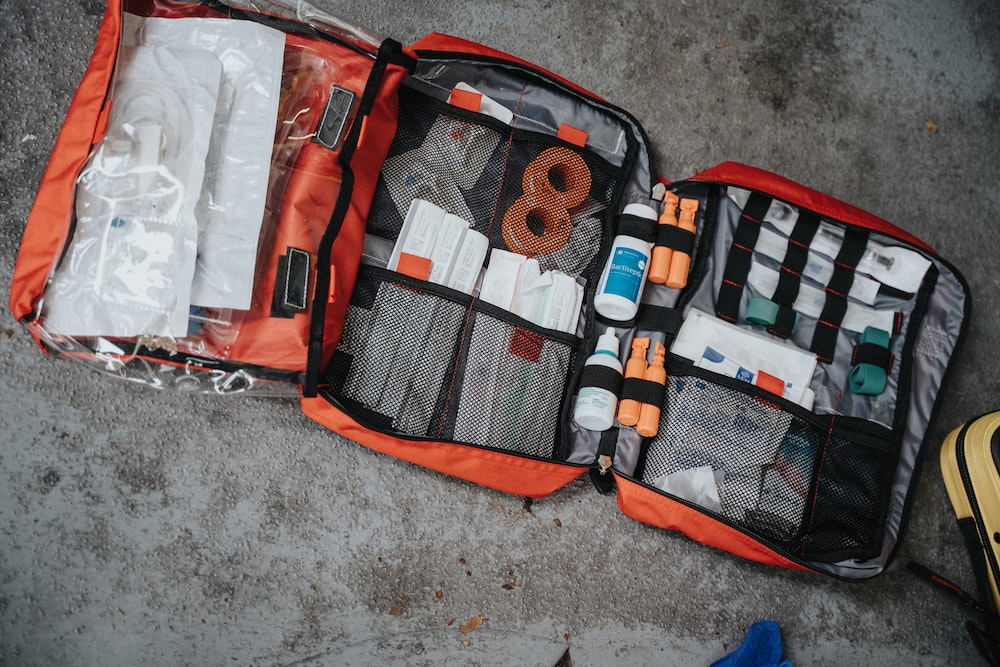
A first aid kit is indispensable for any fishing trip. Your kit should contain items like gauze pads, adhesive bandages, pain relievers, antiseptic wipes, and any personal medication you may require. Additionally, pack some emergency supplies, including a whistle, a multi-tool, a flashlight or headlamp, and a fire-starting kit.
Whether you’re a seasoned angler or a beginner, make sure you’re equipped with the right equipment. Once you get your hands on all the essentials, book an exciting Kenai River fishing trip with an experienced, trusted, and supportive guide.
Jason’s Guide Service should be your first stop. Find out more about our Kenai River fishing guide, Jason Lesmeister, to get started. Whether you’re interested in salmon fishing, a guided rainbow trout trip, or an exhilarating Dolly Varden fishing adventure, we’ll make sure you enjoy an unforgettable experience.
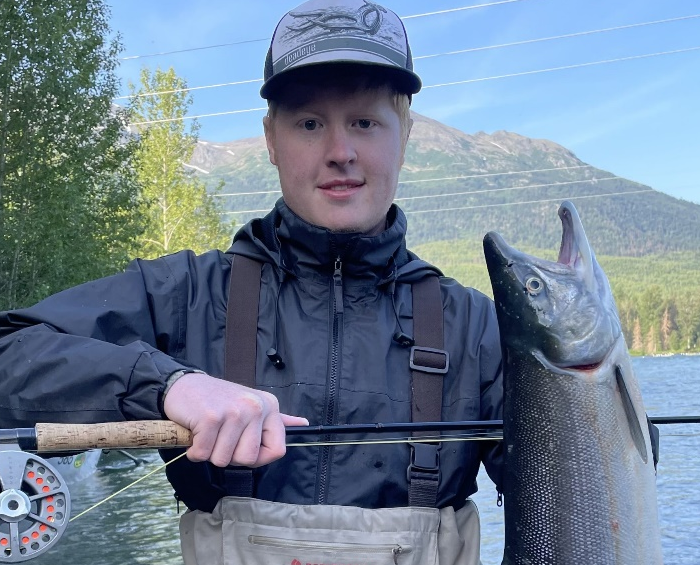
There’s something utterly captivating about the rhythmic movement of a fly rod, the delicate dance of the line through the air, and the tension as the fly lands on the water’s surface.
But what if we told you there’s a place where this serene art form meets the exhilarating rush of battling some of the world’s most sought-after fish? Welcome to the Kenai River, a fishing paradise nestled in the heart of Alaska’s wilderness and the starting point of an adventure you won’t forget!
When you think of the ultimate fishing experience, what comes to mind? Perhaps you envision the glassy surface of a remote lake or the sun-dappled waters of a babbling brook. But the Kenai River offers so much more than just picturesque scenery.
The 82-mile-long river winds through the Kenai Peninsula, teeming with diverse fish species and offering unrivalled opportunities to master the art of fly fishing.
Are you ready to dive in? Let’s explore the techniques and strategies that’ll transform you from a novice to a seasoned angler in no time!
Before diving into the specific techniques and strategies, make sure you develop a good understanding of the Kenai River itself. The river is divided into three sections: the Upper Kenai, Middle Kenai, and Lower Kenai. Make sure you know where you’ll be fishing and the particular species present. This will help you tailor your approach and enjoy a successful fishing trip.
Recommended Read: The Best Time to Fish the Kenai River
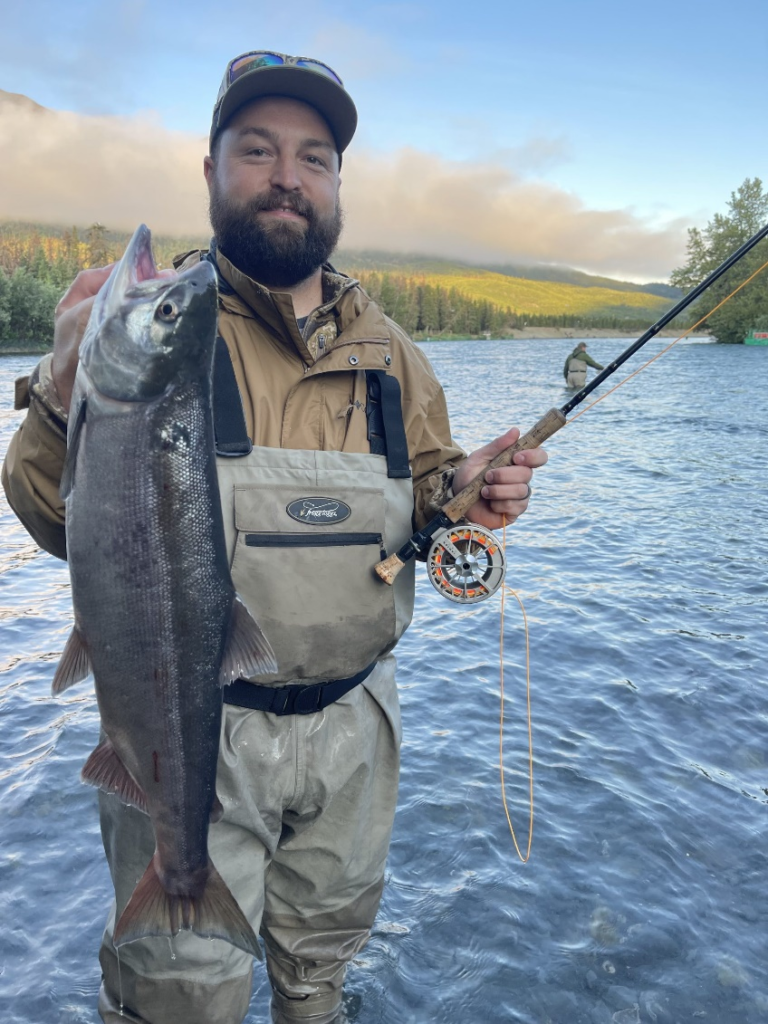
Invest in a high-quality fly rod and reel suitable for the species you target and the water conditions you encounter. For rainbow trout and Dolly Varden, a 6-8 weight rod is recommended, while a 9-10 weight rod is better suited for salmon.
Length is another critical factor to consider. 9 to 10-foot rods are the most versatile for the Kenai River. Invest in a durable and reliable fly reel that matches your rod weight and line requirements. A smooth drag system will help you pull in strong fish easily.
Larger arbor reels are recommended as they allow for faster line retrieval and better line management. Select an appropriate fly fine for the type of fishing you plan to do on the Kenai River.
Weight-forward floating lines are the most versatile as they’re suitable for both nymphing and dry fly fishing. However, sinking tip or full sinking lines are excellent for targeting fish in deep water or during high water conditions.
Use the right leader and tippet material for your chosen fly fishing technique. For dry fly fishing, use a tapered leader that provides a delicate presentation and turns over the fly efficiently. For nymphing or streamer fishing, opt for a level or slightly tapered leader with a heavier tippet.
Fluorocarbon tippet is recommended for its abrasion resistance and low visibility in the water. Equip yourself with a well-organized fly box that contains a variety of patterns to imitate the local insect life and baitfish. Use dry flies, nymphs, and streamers.
Master various casting techniques to achieve fly fishing success on the Kenai River. Start with the basic overhead cast, perfect your timings, and gradually move on to more advanced casts like roll cast, single and double haul, and reach cast.
Each cast has its specific application. Understand when and how to use them to significantly improve your chances of hooking into a trophy fish.
If you want to master the art of fly fishing on the Kenai River, learn how to read the water like a seasoned pro. Identify the areas where fish are likely to hold, e.g., seams, riffles, and deep pools. Look for structures like rocks, fallen trees, and undercut banks that provide cover for fish.
Once you develop a good understanding of where fish are most likely to be found, you’ll be able to focus your efforts and maximize your chances of success.
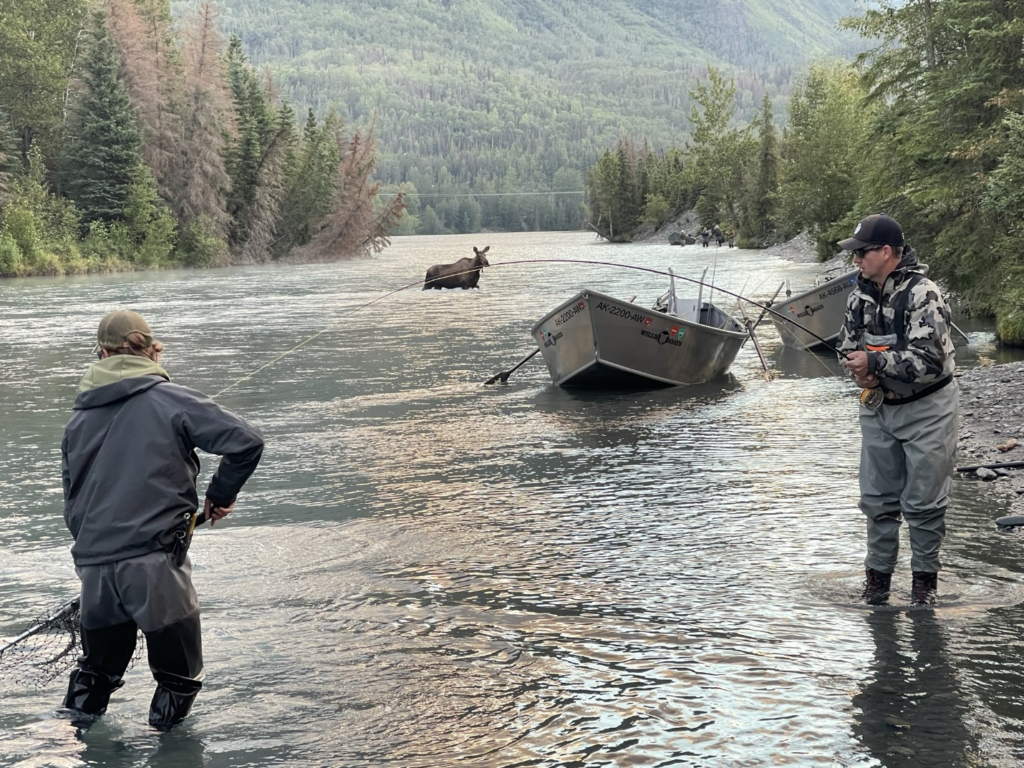
A natural, drag-free drift will help you present your fly in a way that entices fish to strike. By controlling your line, mending, and adjusting your casting angle, you can achieve the perfect drift. Use these tips to master the drift:
By lifting and flipping your line upstream, you can counteract these currents and maintain a drag-free drift. Practice mending both upstream and downstream to adapt to different fishing situations on the Kenai River.
Recommended Read: Putting the Bullseye on Your Target Species
Familiarize yourself with the local insect life and baitfish that make up the primary food sources for the fish you’re targeting. Stock your fly box with various patterns that imitate these natural food sources, and be prepared to switch flies based on the time of day, water conditions, and fish behavior.
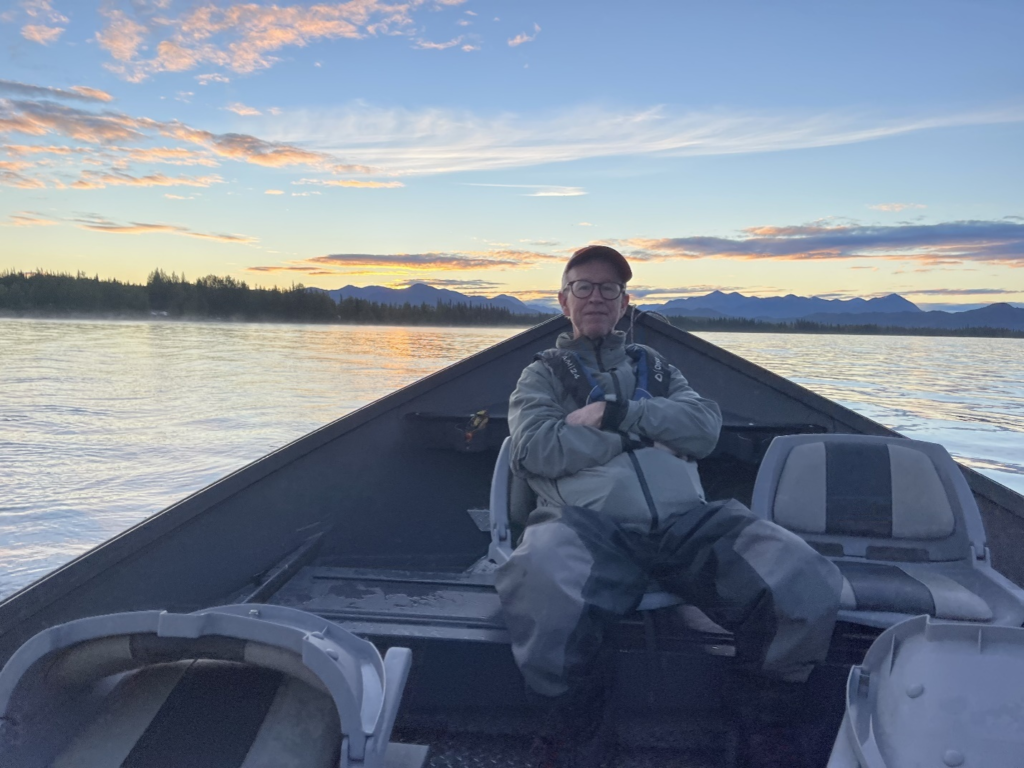
The Kenai River’s conditions can and will change rapidly. Pay close attention to changes in water levels, clarity, temperature, and weather. Adjust your approach accordingly. This may mean switching fly patterns, adjusting your leader length, or changing your casting techniques to suit the current conditions.
Keen observation of fish behavior will help you refine your fly fishing techniques on the Kenai River. Look for signs of feeding, e.g., rising fish or birds diving into the water. Observe how the fish react to your fly and make adjustments in your presentation, fly pattern, or retrieve speed as needed. Understand the nuances of fish behavior to fine-tune your approach and increase your catch rate.
Are you ready to catch your dream fish? Jason’s Guide Service should be your first stop! Our experienced, dedicated, and skilled fly fishing guides help you enjoy an exhilarating fishing experience and achieve fly fishing mastery.
Whether you’re interested in pink salmon fishing, a guided rainbow trout trip, or guided silver salmon fishing, we’re here to take you under our wing. Book your Kenai River fishing trip today!
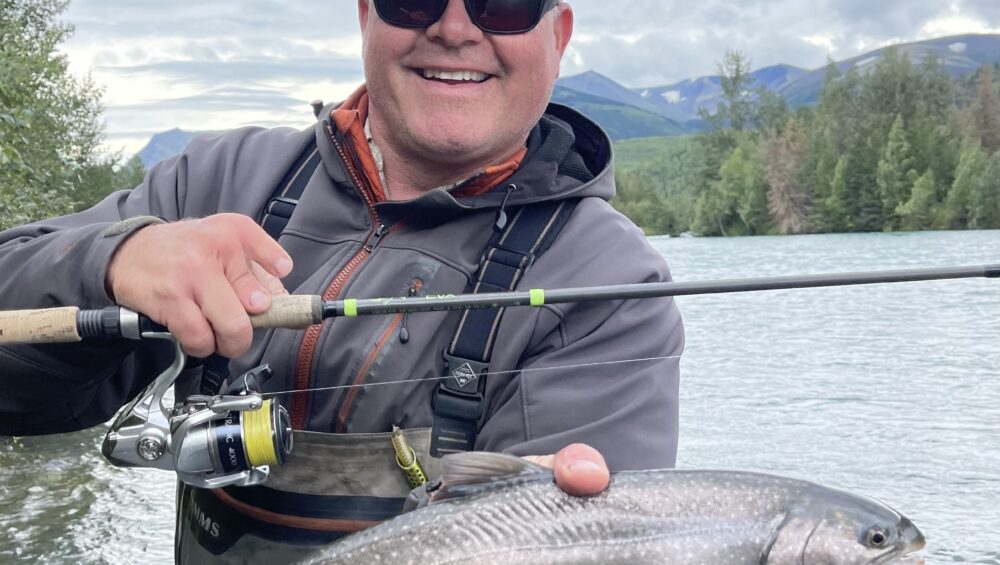
My earliest memories of fishing are when I was a young child, knee high to a grasshopper. I remember going to the reservoirs and lakes in Iowa with my Dad, uncles and grandparents. My grandmas were great anglers in their own right. We would fish together as a family and I would sit next to one of my grandparents or dad and cast a nightcrawler on a hook under a red and white bobber with my Zebco 202 and fiberglass rod laying that bait into the still waters that were loaded with fish. We would catch panfish, bass, bullheads, catfish, carp, anything that bit, and keep most everything we caught. When I was a little older I was allowed to fish the rivers with faster currents with my uncles where I would cast the same bobber rigs out for anything that bit.
Forty plus years years later I still fish bobbers, but now I call them floats, or indicators, and do it with ten-and-a-half and eleven-and-a-half foot GLoomis float rods with Shimano spinning reels spooled with floating line designed for float fishing on the Kenai River and other various rivers in Alaska. The long rods and floating line allow for longer drifts with less drag from the current so we can get a dead drift with out the drift speeding up due to submerged line in the current. Though all this sounds a little technical, it’s actually very easy and fun.
Not every angler that fishes with Jason’s Guide Service wants to try fly fishing so we have these float rods set up for dead drifting flesh flies, egg patterns, nymphs, and leeches, all techniques that are deadly on the Kenai River. Long float rods and floating line paired with a slip or fixed float makes it easy to present your chosen fly to the hungry rainbow trout, Dolly Varden char, and silver salmon.
Float rods fished out of the drift boat require short casts and very little mending of line because the boat and the float are moving the same speed down the Kenai. When we fish float rods from shore we can cast to all the different water columns in the river and run long drifts or short depending on your preference and the water fished. The versatile technique of float fishing allows you to run drifts in deeper water with a slip float or you can fish a fixed float in the shallower water with a shorter leader. There are many ways to fish the float rod for all the species of salmon, rainbow trout, and Dolly Varden char on the Kenai River and the fishing guides at Jason’s Guide Service fishes them all.
I’ve come a long way on my journey as an angler and feel blessed to have a great family that took the time to get me outdoors and fishing every waking moment we could find when I was growing up in Iowa and Minnesota. The journey has lead me down many rabbit holes in my quest to be a great angler and guide, and float fishing is one of my favorite most effective ways to fish for salmon, rainbow trout, and Dolly Varden char there is. I may call a bobber a float, or an indicator, and sometimes I call an indicator or float a bobber, but at the end of the day no matter what you call it or what rod and reel you attach it to, the bobber, or float, is a great tool or technique to put up numbers of trophy rainbow trout, Dolly Varden char, and silver salmon on the Kenai River and is a real fun way to fish. Watching that float get tugged down into the aqua blue waters of the Kenai River and then setting the hook with a long float rod and feeling the tug of that monster fish as they run into the currents of the might Kenai is an experience everyone should enjoy once in their lifetime.